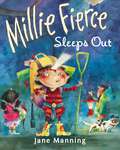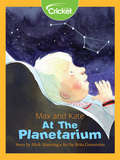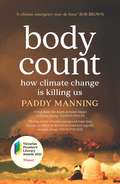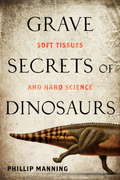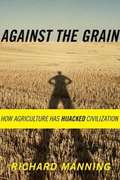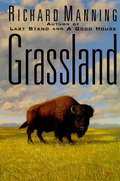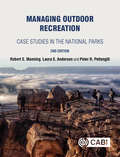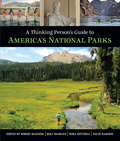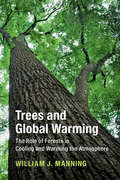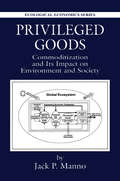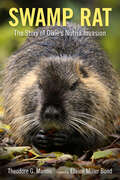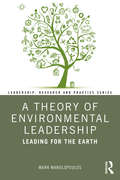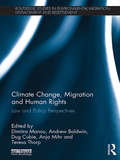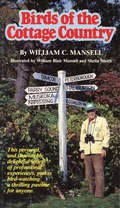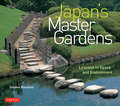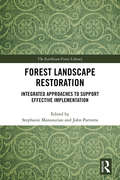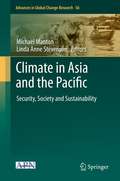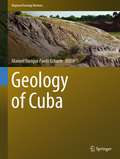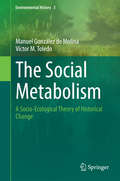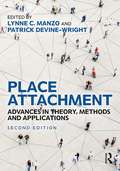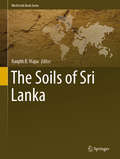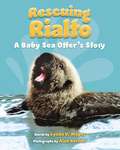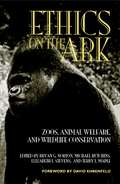- Table View
- List View
Millie Fierce Sleeps Out (Millie Fierce)
by Jane ManningLittle girls can be strong and fierce and brave—and sometimes their ferocity is just the thing they need to save the day.Millie is strong. Millie is fierce. But Millie has learned to keep her fierceness in check. And since she’s been sweet all summer long, Millie gets to have a sleepout with her friends. One where she promises to be well behaved. But things don't go as Millie planned, and our fierce little heroine is not happy. Still, she tries her best to keep her fierceness inside. But when the scary dog from next door howls at the girls' tent, Millie's ferocity saves them all!A perfect addition to a bookshelf filled with Fancy Nancy, Eloise, Olivia, and Ladybug Girl.Praise for the Millie Fierce books:*"Readers already know what Millie learns: To everything there is a time and purpose, including fierceness; they will welcome this validation."--Kirkus Reviews, starred review"Millie Fierce is a delightfully naughty mix between Maurice Sendak's Where the Wild Things Are and Molly Bang's When Sophie Gets Angry."--School Library Journal"An unexpected Yeatsian lilt to Manning's writing ("Millie frizzed out her hair and made the crazy eye") lifts the text out of the ordinary; her powers of observation set it apart, too."--Publishers Weekly
Max and Kate: At the Planetarium
by Mick ManningDid you know you can explore space and visit the stars from right here on planet Earth? Follow along with Max and Kate as they visit a science museum and learn about the night sky.
Body Count: How Climate Change is Killing Us
by Paddy ManningSuddenly, when the country caught fire, people realised what the government has not: that climate change is killing us.But climate deaths didn&’t start in 2019. Medical officers have been warning of a health emergency as temperatures rise for years, and for at least a decade Australians have been dying from the plagues of climate change – from heat, flood, disease, smoke. And now, pandemic.In this detailed, considered, compassionate book, Paddy Manning paints us the big picture. He revisits some headline events which might have faded in our memory – the Brisbane Floods of 2011; Melbourne&’s thunderstorm asthma fatalities of 2016 – and brings to our attention less well-publicised killers: the soil-borne diseases that amplify after a flood; the fact that heat itself has killed more people than all other catastrophes put together. In each case, he has interviewed scientists to explore the link to climate change and asks how – indeed, whether – we can better prepare ourselves in the future.Most importantly, Manning has spoken to survivors and the families of victims, creating a monument to those we have already lost. Donna Rice and her 13-year-old son Jordan. Alison Tenner. The Buchanan family. These are stories of humans at their most vulnerable, and also often at their best. In extremis, people often act to save their loved ones above themselves. As Body Count shows, we are now all in extremis, and it is time to act.Respected journalist Paddy Manning tells these stories of tragedy and loss, heroism and resilience, in a book that is both monument and warning. &‘A climate emergency tour de force.' Dr Bob Brown 'True stories of heroism and unimaginable loss...Body Count is a brilliant exposition of why we must deal with the climate problem now.' Ross Garnaut 'Climate change kills. … Through the accounts of people who have lost so much, Paddy Manning drives home the deeply personal impact of climate change. Governments continue to ignore the impact on climate change on human health at OUR peril. The future of our planet and our future generations depends on everyone playing their part, today.' Professor Kerryn Phelps 'A stunningly powerful call to political leaders everywhere who hear the warnings of the devastating impacts of climate change on health but fail to act.' Dr Helen Haines, independent member for Indi &‘Moving stories of heroic courage and tragic loss. A pause to reflect on the lives lost and how urgently we need change.&’ David Pocock, former Wallabies captain
Grave Secrets of Dinosaurs: Soft Tissues and Hard Science
by Phil ManningMany of us have seen dinosaur bones and skeletons, maybe even dinosaur eggs, but what did those fearsome animals really look like in the flesh? Soft-tissue fossils give tantalizing clues about the appearance and physiology of the ancient animals. Bone structure is just the beginning of our knowledge today, thanks to amazing digs like these. Drawing on new breakthroughs and cutting-edge techniques of analysis, Dr. Manning takes us on a thrilling, globe-spanning tour of dinosaur mummy finds from the first such excavation in 1908 to a baby dinosaur unearthed in 1980, from a dino with a heart in South Dakota to titanosaur embryos in Argentina. And he discusses his own groundbreaking analysis of Dakota, discovered by Tyler Lyson. Using state-of-the-art technology to scan and analyse this remarkable discovery, National Geographic and Dr. Manning create an incredibly lifelike portrait of Dakota. The knowledge to be gained from this exceedingly rare find, and those that came before it, will intrigue dinosaur-loving readers of all ages.
Against the Grain: How Agriculture Has Hijacked Civilization
by Richard ManningIn this bold book, Richard Manning narrates a fascinating revisionist history of agriculture, from the domestication of plants and animals ten thousand years ago to today's corporate megafarms. Instead of a bucolic Ur-myth, Manning portrays an enterprise that was from its inception expansionist, and that did not so much accompany colonialism as drive it. Drawing on the work of anthropologists, biologists, archaeologists, and historians, as well as on his own extensive research, he traces a commodification of grain that has reached its apex in contemporary agribusiness and that has helped to build some of the most familiar -- and dysfunctional -- features of our political and economic landscape.
Grassland: The History, Biology, Politics, and Promise of the American Prairie
by Richard ManningThe author, an award-winning journalist and nature writer, looks at the grasslands of the American West and Midwest, tracing the region from pre-history to the present. He discusses attempts to control the land and efforts to restore native grasses and wild herds of buffalo, and visits Ted Turner's progressive and controversial Montana ranch. Annotation c. by Book News, Inc., Portland, Or.
Managing Outdoor Recreation: Case Studies in the National Parks
by Robert Manning Laura E Anderson Peter PettengillThis fully updated second edition presents a conceptual framework of outdoor recreation management in the form of a series of management matrices. It then illustrates this framework through new and updated case studies in the US national parks, and concludes with the principles of outdoor recreation management. Written by an author team with extensive academic and practical experience in the field of outdoor recreation, the book: - Develops and presents a matrix-based framework of strategies and practices for managing outdoor recreation in a sustainable way. - Illustrates application of best management practices through a series of case studies in diverse national parks. - Includes lecture slides and online matrices to aid the teaching of outdoor recreation management to a new generation. Managing Outdoor Recreation, 2nd Edition is an essential resource for undergraduate and graduate students of parks, outdoor recreation and related subjects, as well as a helpful tool for practitioners.
A Thinking Person's Guide to America's National Parks
by Robert Manning Rolf Diamant Nora Mitchell David HarmonThe book delves into issues affecting an array of parks: the iconic western national parks like Yellowsto≠ the urban parks such as Golden Gate National Recreation Area; historic sites including the Statue of Liberty National Monument and Gettysburg National Military Park; and cultural areas like Mesa Verde National Park that are among America's over 400 national parks. Twenty-three essays from contributing authors with deep personal and professional connections to the national parks serve as expert guides to places in the park system where: much of the nation's biological and cultural diversity is represented;ideas such as freedom, civil rights, and conservation were conceived;vast wilderness offers solitude and reflection;storied landscapes preserve a sense of place;the balance between recreation and preservation is tested;research and learning engage the next generation;the dynamics of nature are being shaped by a changing climate; and innovations in technology, sustainability, and stewardship provide a sense of purpose and hope.
Trees and Global Warming: The Role of Forests in Cooling and Warming the Atmosphere
by William J. ManningLarge-scale tree planting is advocated to provide additional atmospheric cooling and further reduce global warming. This raises a question about the present time: do trees cool or warm the atmosphere? This question does not have a simple yes or no answer. Examination of the greenhouse effect, global warming and the carbon cycle, and how trees and forests function provides the basis for understanding how forests might cool or warm the atmosphere. Results from research and models indicate that cooling or warming depends on where forests are located and the type and color of trees. Cooling generally prevails over warming, but this may change. This book will appeal to anyone interested in climate change, ecology and conservation.
The Last Eagle
by Daniel MannixSurvival--against the hostility of man and beast, and against the dreadful odds of Nature--is the theme of this magnificent book, a beautifully written fictionalised biography. It tells the story, from timorous infancy to glorious maturity, of an American bald eagle. Daniel Mannix captures all the poetry, romance, and glory of an eagle's life, while telling his reader how it must feel to be a fledgling struggling for food, a young bird just learning to hunt, and finally what it must be like to reign as acknowledged lord of the skies. The eagle of which the author writes may well be the last; the bald eagles have been badly depleted by hunters, vandals, and egg collectors. THE LAST EAGLE is both a poignant and fascinating story and a plea for conservation.
Privileged Goods: Commoditization and Its Impact on Environment and Society
by Jack P. MannoWhat are the obstacles in the way of effectively solving the environmental crises of our time? What can we do to overcome them? These may be two of the most important questions heading into the 21st century. Organized human societies have the ability to completely change the world. While we have excelled at building, destroying and rebuilding, we h
Swamp Rat: The Story of Dixie's Nutria Invasion (America's Third Coast Series)
by Theodore G. MannoTheodore G. Manno traces the history of nutria from their natural range in South America to their status as an invasive species known for destroying the environmentally and economically important wetlands along the Gulf Coast. In this definitive book on “swamp rats,” Manno vividly recounts western expansion and the explosion of the American fur industry. Then he details an apocalyptic turn—to replace an overhunted beaver population in North America, humans introduced nutria. With an eclectic repertoire of true stories that read like fiction and are played out by larger-than-life characters, Manno conveys the legend of empire-seeking fur trappers, the bizarre miscommunications that led to nutria releases, and the sadness that comes with killing millions of nutria whose ancestors were never meant to leave their South American habitat. He tells of disastrous interactions among hungry nutria, storm surges from Hurricane Katrina, and major oil spills. His extensively researched and epic narrative, accompanied by more than thirty photographs and entertaining interviews with biologists, historians, fashion designers, and chefs, weaves a poignant tale of empire, conquest, fortune, and even Tabasco Sauce. Manno provides a full overview of what is currently known about nutria—a species now aggressively hunted with a bounty program because of their reputation for wetland destruction.
A Theory of Environmental Leadership: Leading for the Earth (Leadership: Research and Practice)
by Mark ManolopoulosIn A Theory of Environmental Leadership, Mark Manolopoulos draws on his original model of leading outlined in his cutting-edge book Following Reason to derive and develop the first properly systematic model of eco-leadership. Suppose humanity’s relation with the Earth may be described in terms of leadership "stages" or modalities: once upon a time, the Earth led or ruled humanity, and now we humans rule or lead the Earth. When the Earth led, the Earth flourished; now that humankind leads, the Earth flounders - ecological crises multiply and intensify. However, there might be a third stage or modality of leadership: humanity leading for the Earth, leading in a way that allows the world, including humans, to re-flourish. What would be the nature of this truly environmental form of leadership? A Theory of Environmental Leadership identifies and critically analyzes the two basic and incompatible positions associated with the way we construe and interact with the non-human: anthropocentrism (human supremacism) and ecocentrism (ecological egalitarianism). By rigorously analyzing and leveraging this polarity, this book outlines an innovative theory of eco-leadership together with some of its confronting-but-necessary measures. Expansive and incredibly timely, A Theory of Environmental Leadership is ideal for a range of audiences, from scholars and students of environmental leadership studies to activists and policymakers. The book’s remarkable clarity and engaging character also makes it suitable for the general public.
Climate Change, Migration and Human Rights: Law and Policy Perspectives (Routledge Studies in Environmental Migration, Displacement and Resettlement)
by Dimitra Manou Andrew Baldwin Dug Cubie Anja Mihr Teresa ThorpClimate Change already having serious impacts on the lives of millions of people across the world. These impacts are not only ecological, but also social, economic and legal. Among the most significant of such impacts is climate change-induced migration. The implications of this on human rights raise pressing questions, which require serious scholarly reflection. Drawing together experts in this field, Climate Change, Migration and Human Rights offers a fresh perspective on human rights law and policy issues in the climate change regime by examining the interrelationships between various aspects of human rights, climate change and migration. Three key themes are explored: understanding the concepts of human dignity, human rights and human security; the theoretical nexus between human rights, climate change and migration or displacement; and the practical implications and challenges for lawyers and policy-makers of protecting human dignity in the face of climate change and displacement. The book also includes a series of case studies from Alaska, Bangladesh, Kenya and the Pacific islands which aim to improve our understanding of the theoretical and practical implications of climate change for human rights and migration. This book will be of great interest to scholars of environmental law and policy, human rights law, climate change, and migration and refugee studies.
Birds of the Cottage Country
by William C. Mansell William Blair Mansell Sheila SmithBirds of the Cottage Country is a virtual storybook account of the author’s personalized observations throughout Ontario’s cottage playground. It clearly illustrates the downright fun, vast beauty, and consuming involvement of bird watching – even for the most skeptical of laymen. Bill Mansell’s daily experiences at birding, spread over a period of sixty-five years, result in such a familiarity with his subject that the reader is drawn as a participant into a delicately beautiful intimacy with avian nature. Birds of the Cottage Country will be read by some solely for its humour and humanistic style; yet serious birdwatchers will also find it a refreshingly new guide and reference tool.
The Bones of the Earth
by Howard MansfieldThe Bones of The Earth is a book about landmarks, but of the oldest kind--sticks and stones. For millennia this is all there was: sticks and stones, dirt and trees, animals and people, the sky by day and night. The Lord spoke through burning bushes, through lightning and oaks. Trees and rocks and water were holy. They are commodities today and that is part of our disquiet. Howard Mansfield explores the loss of cultural memory, asking: What is the past? How do we construct that past? Is it possible to preserve the past as a vital force for the future? He writes eloquently on the land and time, on how to be a tourist of the near-at-hand, and on the forces that try to topple us. From the author of In the Memory House and The Same Ax, Twice comes The Bones of The Earth, a stunning call for reinventing our view of the future.
Japan's Master Gardens
by Stephen MansfieldNo two Japanese gardens are ever the same. Each is inimitable, yet embodies commonalities of design and aesthetic taste. Each finds the space for innovation within a tradition that benefits from a thousand years of applied knowledge. Presenting twenty-five master gardens, Japan's Master Gardens explores the ingenuity and range of Japanese landscaping, from the self-imposed confines of courtyard designs to the open expanses of the stroll garden.Japan's Master Gardens illustrates how, through the ministrations of generations of gardeners, original landscapes have maintained their mastery and demonstrates how contemporary landscaping draws from tradition, making ancient gardens relevant to the lives of people in the twenty-first century.This beautifully illustrated book takes readers on an exploration of the outward forms, underpinning principles, complex use of metaphor and allusion, and beauty and depth that set the Japanese garden apart.
Forest Landscape Restoration: Integrated Approaches to Support Effective Implementation (The Earthscan Forest Library)
by Stephanie Mansourian John ParrottaForest landscape restoration (FLR) is a planned process that aims to regain ecological integrity and enhance human wellbeing in deforested or degraded landscapes. The aim of this book is to explore options to better integrate the diverse dimensions - spatial, disciplinary, sectoral, and scientific - of implementing FLR. It demonstrates the value of an integrated and interdisciplinary approach to help implement FLR focusing specifically on four issues: understanding the drivers of forest loss and degradation in the context of interdisciplinary responses for FLR; learning from related integrated approaches; governance issues related to FLR as an integrated process; and the management, creation and use of different sources of knowledge in FLR implementation. The emphasis is on recognising the need to take human and institutional factors into consideration, as well as the more obvious biophysical factors. A key aim is to advance and accelerate the practice of FLR, given its importance, particularly in a world facing increasing environmental challenges, notably from climate change. The first section of the book presents the issue from an analytical and problem-orientated viewpoint, while later sections focus on solutions. It will interest researchers and professionals in forestry, ecology, geography, environmental governance and landscape studies.
Climate in Asia and the Pacific: Security, Society and Sustainability (Advances in Global Change Research #56)
by Michael Manton Linda Anne StevensonCommissioned by the Intergovernmental Meeting (IGM) of the Asia-Pacific Network for Global Change Research (APN), this book offers a detailed survey of the current status of climate change and climate variability in the Asia-Pacific region, a thorough and thoughtful assessment of climate and security and clear recommendations on the best paths of climate research in the future.
Geology of Cuba (Regional Geology Reviews)
by Manuel Enrique Pardo EcharteThe evolution of geological cartography in Cuba in its more than 135 years of history has been possible through the consultation of numerous archival reports, publications, maps and personal interviews with different authors and geologists of vast experience. A brief critical analysis is made of the increase in the degree of geological knowledge of the country since the elaboration of the Geological Sketch of the Cuban Island at a scale of 1: 2 000 000 (Fernández de Castro, 1883), first of Cuba and of Ibero-America, until the most recent Digital Geological Map of Cuba at scale 1: 100 000 (Pérez Aragón, 2016). Cuba and its surroundings are a geological mosaic in the southeast corner of the North American plate with rocks from many different origins, from Proterozoic to Quaternary, extended along the southern border of the plate. From the Eocene, this belt has been dissected by several great faults, related to the development of some great oceanic depressions (Cayman trough and Yucatan basin). The fossil record of Cuba, which covers approximately the last 200 million years of life on Earth, is rich in very varied fossils, witnessing a wide diversity of organisms, both animals and plants, that inhabited the Antillean and Caribbean region; and that constitute the inheritance of the biological diversity that the current Cuban archipelago exhibits. As a result of the preparation of the Cuban Metallogenic Map at scale 1: 250 000, forty-one models and eight sub-models of metallic mineral deposits were identified. These models, of descriptive–genetic type, together with the analysis of their spatial distribution and their relationship with geology, allowed the identification and mapping of ten mineral systems, linked to the geodynamic environments present in the Cuban territory. Cuba has large deposits of limestone, loam, dolomite, kaolin, gypsum and anhydrite, rock salt, marbles, sands and clays of different types, zeolites, peat, therapeutic peloids and many more. There are manifestations of decorative and precious rocks such as jasper, jadeite, different varieties of quartz and even xylopals. A compilation of geochemical data of oceanic basalt samples from previous works, together with data of analyzed samples during this study in order to discuss geochemical criteria based on immobile element (proxies for fractionation indices, alkalinity, mantle flow and subduction addition), provide a comprehensive ophiolite classification according to their tectonic setting. This book addresses different facets of the geological knowledge of Cuba: history of its cartography, marine geology, fossil record, stratigraphy, tectonics, classification of its ophiolites, quaternary deposits, metallogeny and minerageny.
The Social Metabolism
by Manuel González de Molina Víctor M. ToledoOver this last decade, the concept of Social Metabolism has gained prestige as a theoretical instrument for the required analysis, to such an extent that there are now dozens of researchers, hundreds of articles and several books that have adopted and use this concept. However, there is a great deal of variety in terms of definitions and interpretations, as well as different methodologies around this concept, which prevents the consolidation of a unified field of new knowledge. The fundamental aim of the book is to conduct a review of the past and present usage of the concept of social metabolism, its origins and history, as well as the main currents or schools that exist around this concept. At the same time, the reviews and discussions included are used by the authors as starting points to draw conclusions and propose a theory of socio-ecological transformations. The theoretical and methodological innovations of this book include a distinction of two types of metabolic processes: tangible and intangible; the analysis of the social metabolism at different scales (in space and time) and a theory of socio-ecological change overcoming the merely "systemic" or "cybernetic" nature of conventional approaches, giving special protagonism to collective action.
Place Attachment: Advances in Theory, Methods and Applications
by Lynne C. Manzo Patrick Devine-WrightFollowing on from the ground-breaking first edition, which received the 2014 EDRA Achievement Award, this fully updated text includes new chapters on current issues in the built environment, such as GIS and mapping, climate change, and qualitative approaches. Place attachments are powerful emotional bonds that form between people and their physical surroundings. They inform our sense of identity, create meaning in our lives, facilitate community, and influence action. Place attachments have bearing on such diverse issues as rootedness and belonging, placemaking and displacement, mobility and migration, intergroup conflict, civic engagement, social housing and urban redevelopment, natural resource management, and global climate change. In this multidisciplinary book, Manzo and Devine-Wright draw together the latest thinking by leading scholars from around the globe, including contributions from scholars such as Daniel Williams, Mindy Fullilove, Randy Hester, and David Seamon, to capture significant advancements in three main areas: theory, methods, and applications. Over the course of fifteen chapters, using a wide range of conceptual and applied methods, the authors critically review and challenge contemporary knowledge, identify significant advances, and point to areas for future research. This important volume offers the most current understandings about place attachment, a critical concept for the environmental social sciences and placemaking professions.
The Soils of Sri Lanka (World Soils Book Series)
by Ranjith B. MapaThis book presents a comprehensive and up-to-date overview of the soils of Sri Lanka. Including sections on the soil research history, climate, geology, geomorphology, major soil types, soil maps, soil properties, soil classification, soil fertility, land use and vegetation, soil management, soils and humans, soils and industry, and future soil issues, the book summarizes the current state of knowledge in a concise and highly reader-friendly way.
Rescuing Rialto: A Baby Sea Otter's Story
by Lynda V. Mapes"Calling all sea otter fans!" - KirkusOn a sunny August morning in 2016, a baby sea otter was found washed up on the sand. Orphaned and sick, Rialto was taken to the Seattle Aquarium, where his dedicated caretakers nursed him back to health and taught him how to be an otter. Soon, the charming Rialto was stealing hearts as he played with toys made of ide, swam in his very own pool, ate tasty clams, and floated on his back. Learn about the rescue--and how you can help to save this endangered species--in Rescuing Rialto, from the Seattle Times reporter and photographer who chronicled this story as it happened. Just as he captured them, Rialto's sure to steal your heart, too.
Ethics on the Ark: Zoos, Animal Welfare, and Wildlife Conservation
by Terry Maple Elizabeth Stevens Michael Hutchins Bryan G. NortonEthics on the Ark presents a passionate, multivocal discussion--among zoo professionals, activists, conservation biologists, and philosophers--about the future of zoos and aquariums, the treatment of animals in captivity, and the question of whether the individual, the species, or the ecosystem is the most important focus in conservation efforts. Contributors represent all sides of the issues. Moving from the fundamental to the practical, from biodiversity to population regulation, from animal research to captive breeding, Ethics on the Ark represents an important gathering of the many fervent and contentious viewpoints shaping the wildlife conservation debate.From the Trade Paperback edition.
